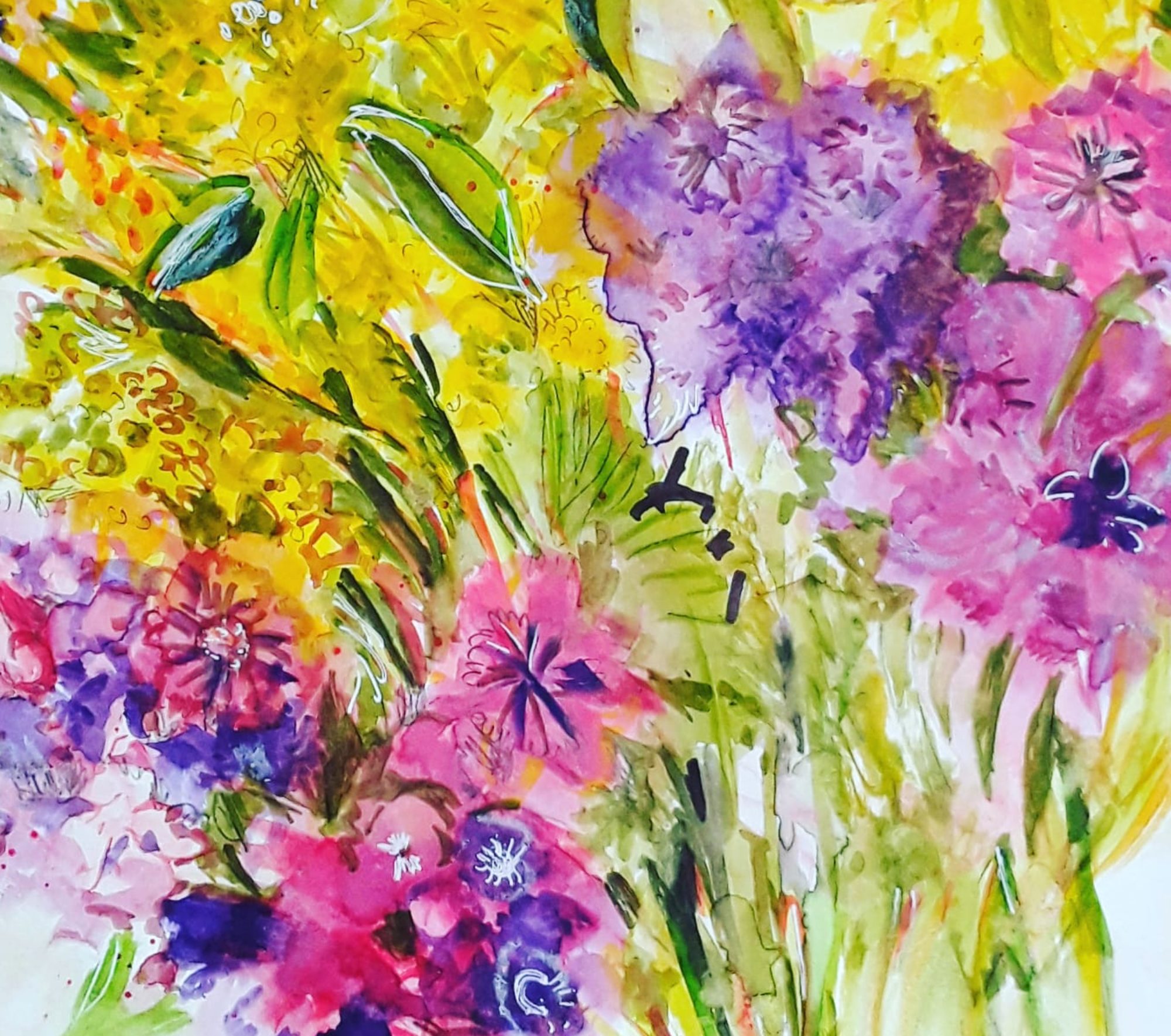
Good morning, everyone. I’d like to show you this watercolour painting, ‘A Country Walk’. Because it’s the third exercise I have done from Paul Talbot-Greaves excellent book, 30 Minute Landscapes. And I’m really pleased with the result. But I’m well aware that I’m not yet at the stage where I could make such a beautiful, striking composition as this from a simple scene. So, I’ll keep on practising!
However, this painting was an excellent way to practise the new techniques I’m learning and have fun at the same time! For example, I practised stippling, as I explained in my last post here. Also there’s spattering of paint, created by flicking a paintbrush, loaded with paint. Please wear protective clothing! Seriously though, see if you can spot these two techniques in this closeup of a holly bush.
Trees in Closeup

And I also had the chance to practise painting nice fine branches and twigs by gradually changing brush size. Yes, I know I should have thought of that myself, but I didn’t! Finally, you might also see the shadows on the road are carefully painted by following Paul’s method. To be honest, I was very nervous about this part of the painting. Mainly, I think because I am so used to manipulating acrylic paint which very generously allows you to paint over your mistakes. In fact, I might now have a bit more confidence when painting shadows in a landscape. Instead of just fudging it and hoping for the best. Here’s a closeup of branches and shadows.

Anyway, I do think this study will help me to progress my painting. And , to finish off with, have a look at this acrylic painting from a couple of years ago, with a similar composition. Of course, this is an imaginary scene and seems to me not quite finished. Perhaps I will feel more inspired to finish it now, who knows?
Another Country Walk







































































































